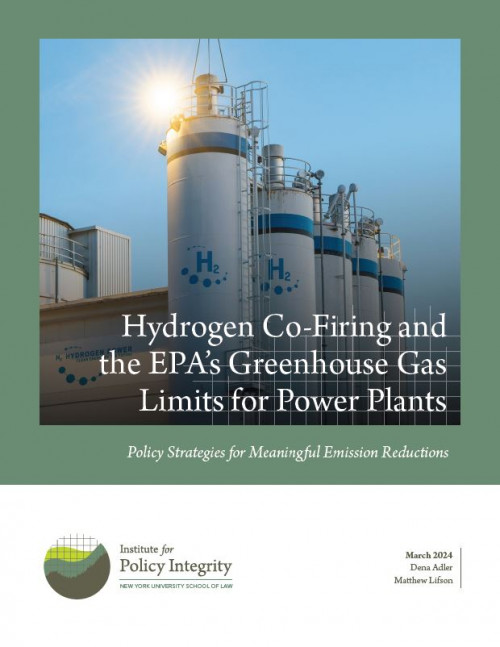In May 2023, the Environmental Protection Agency (EPA) proposed new limits for carbon dioxide (CO2) emissions from fossil fuel-fired power plants using its authority under Section 111 of the Clean Air Act. The proposed rule reflects a decade of careful development from EPA and embraces an approach consistent with the Supreme Court’s ruling in West Virginia v. EPA. In that decision, the Court expressed support for emission limits based on technologies that reduce pollution by causing sources to operate more cleanly. Accordingly, in the proposed rule, EPA based the limits for certain natural gas-fired turbines on the emission reductions achievable through hydrogen co-firing (i.e., burning a blend of natural gas and hydrogen).
Unlike fossil fuels, hydrogen does not release CO2 when burned. But producing hydrogen can cause significant greenhouse gas (GHG) emissions. The most common way to make hydrogen is through “steam methane reforming,” which releases substantial CO2 as a chemical byproduct. It is also possible to create “electrolytic” hydrogen by splitting water molecules via electricity—a process known as “electrolysis.” Electrolytic hydrogen production causes significant GHG emissions when it relies on electricity generated from burning fossil fuels, but few emissions when the electricity comes from renewables or nuclear plants. When the electricity for electrolysis comes from burning natural gas, electrolysis induces twice the GHG emissions of steam methane reforming for the same amount of hydrogen.
Given these potential emissions, the proposed rule recognizes that “[c]o-firing hydrogen at combustion turbines when that hydrogen is produced with large amounts of GHG emissions would ultimately result in increasing overall GHG emissions, compared to combusting solely natural gas at the combustion turbine.” It is thus important to consider what type of hydrogen a power plant will co-fire with—otherwise this approach to reducing emissions could exacerbate climate change.
This report proceeds in three parts: In Section I, we explain the role of hydrogen co-firing in EPA’s proposed rule. In the proposed rule, EPA determines emission limits for certain gas turbines based on the emission reductions possible when co-firing with “low-GHG hydrogen.” Then, in Section II, we discuss how EPA should design its final rules to achieve the specified GHG-reduction goals and why retaining the low-GHG hydrogen limitation could help this effort. Finally, in Section III, we highlight additional actions that EPA and other regulators can take to further minimize the emissions (and the resulting climate harm) from hydrogen co-firing. These actions would play a particularly important gap-filling role if EPA adopts a final rule that provides leeway for high-GHG hydrogen to be co-fired, or if a severable low-GHG limitation is struck down by a court.

